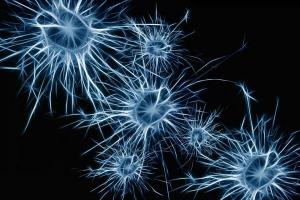Invertebrate animals: characteristics and classification

Image: Animal Kingdom
Our planet is inhabited by a huge number of animals, which are very different from each other. Throughout history, different ways have been sought to classify animals, one of the best known being the division between invertebrates and vertebrates. To understand this division in depth, in this lesson from a TEACHER we are going to talk about the characteristics and classification of invertebrate animals.
Invertebrates are all those animals that do not belong to vertebrates, that is, that they do not have a backbone nor an articulated internal skeleton. The invertebrate animals with the majority in the animal world, being 95% of the animal species.
There are invertebrates of many kinds, but most have a number of common features that differentiate them from vertebrates. Some of these features are:
- As a general rule, they are usually very small animals compared to vertebrate animals.
- They do not have an articulated internal skeleton, although some do have an external skeleton called exoskeleton, such as arthropods.
- They are divided into different classifications, with the arthropods having the greatest number.
- A large part of invertebrates have shells, shells, or other kinds of protection.
- There is no single habitat for invertebrates, their great variety means that there are both terrestrial, marine and aerial invertebrates.
- The vast majority have mobility, locomotion being very important for these creatures. Although some invertebrates only have mobility in one stage of life, such as sponges, they can only move when they are young.
- Many invertebrates are essential to nature, dealing among things with the pollination of flowers and the control of certain pests. They are also essential in the food chain, being the main food of several vertebrates.
- Various invertebrates can perform the metamorphosis, a period in which they enter different phases, undergoing great changes between each phase.
- Most invertebrates are oviparous, that is, they reproduce by means of eggs, although there are also a large number of invertebrates asexual.

To continue with this lesson on invertebrate animals characteristics and classification, we must talk about the different phyla into which invertebrates are divided.
Arthropods
Arthropods are the most numerous phylum of invertebrates and of the animal world in general. It is made up of animals with exoskeletons and articulated appendages. There are more than a million animals of this type. The subphiles of arthropods are as follows:
- Insects: characterized by having antennae, three pairs of legs, and sometimes wings. The vast majority of arthropods belong to this subphylum, being the subphile with the largest number of animal species on our planet and the most abundant. Some examples of insects are flies, dragonflies, or cockroaches.
- Arachnids: characterized by articulated body and legs, 4 pairs of legs, and by having a joint between head and thorax called cephalothorax. Some examples of arachnids are the spiders and the scorpions.
- Myriapods: They are characterized by a body with two parts, a head and a trunk, the latter being elongated, divided into segments and many legs. It is divided into four different groups: centipedes, millipedes, pauropods, and symphyla.
- Crustaceans: They are characterized by being aquatic, having an exoskeleton and having two antennas. Some examples of crustaceans are lobsters, crabs, prawns and barnacles.
Mollusks
Mollusks are a phylum of invertebrates characterized by a soft body generally protected by a shell. Most are aquatic animals, although many have evolved to live in terrestrial habitats. Mollusks are a very large group, made up of very different species such as: clams, squid, octopus and snails. They are the second class of invertebrates with the highest number, being surpassed only by arthropods.
Poriferous
Poriferous o sponges They are a phylum of mostly aquatic invertebrates characterized by the lack of authentic tissues. Formerly it was considered that they were plants and not animals, but when a system of internal water currents was discovered, it was known that they were really animals.
Cnidarians
Cnidarians are a phylum of aquatic invertebrates characterized by their bag-shaped body and by secreting stinging substances from the tentacles. Within the cnidarians we can find the jellyfish, anemones, corals and polyps.
Echinoderms
Echinoderms are a phylum of marine invertebrates characterized by an internal skeleton formed by calcareous elements and by their pentaradial symmetry. To this class belong the starfish and sea urchins.
Flatworms
Flatworms are a phylum of invertebrates characterized by being hermaphroditic, and parasitic, requiring a host to survive. Examples of this class are flatworms and the various parasites of amphibians and fish.
Nematodes
Nematodes are a phylum of invertebrates whose life form can be both free and parasitic. They are usually called colloquially round or cylindrical worms, being known to be the cause of various eating diseases.
Annelids
Annelids are a phylum of invertebrates characterized by a body divided into rings. Some examples of this class are earthworms and leeches.

Image: Animals
If you want to read more articles similar to Invertebrate animals: characteristics and classification, we recommend that you enter our category of biology.


